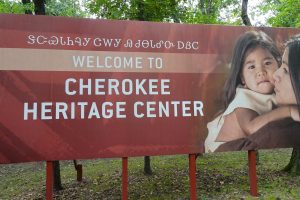6-7 Oct: This was our first visit to Oklahoma. We entered it from the east on the Talimena Scenic Drive, which winds along the crest of the long and narrow east-west ridges of Winding Stair and Rich Mountains, with several scenic outlooks over the Ouachita National Forest. The next day we hiked about four miles of the 223-mile-long Ouachita National Recreation Trail and then back again. The weather was beautiful and clear, much appreciated after heavy rain during the previous evening and night. We also strolled along a self-guided nature trail at the nearby Kerr Arboretum, where signs identified many of the trees and shrubs. We had occasionally seen single walking sticks before, but this day we saw many of them.
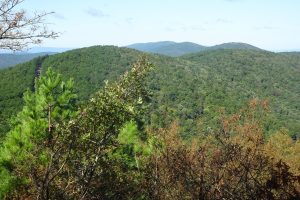
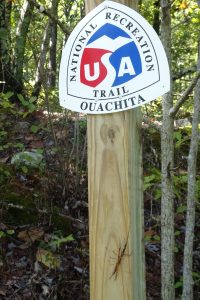
8-9 Oct: After traveling north to camp in Sequoyah State Park, we spent the next day in the city of Tulsa, to see the Gilcrease Museum and ride our bikes on the Riverparks greenway trail network. The Gilcrease has an exceptional collection of western art, with many Frederick Remington paintings and bronze sculptures, several Charles Russell paintings, a fine collection of George Catlin paintings, and western paintings by many other excellent artists. There was a special exhibit of Dorothea Lange photos capturing the sense of desperation of Americans during the Great Depression. A research collection of pottery and other artifacts was on display on shelves and in drawers, with information on the items available to visitors by entering catalog numbers on tablet computers. Tulsa’s Riverparks bike path extends for several miles along both banks of the wide Arkansas River, a major tributary of the Mississippi. In sections of the pathway where the greenway widens into substantial park areas, there are very attractive benches, lawns, and ornamental plantings. For much of the way there is a walking and running path separate from the bike path.
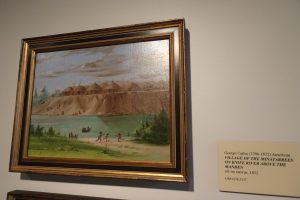
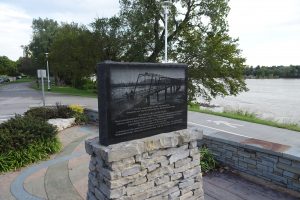
10 Oct: Since we had stayed in the Cherokee camping loop of Sequoyah State Park, it was fitting that our next stop was the Cherokee Heritage Center in Tahlequah, the headquarters of the Cherokee Nation. The main exhibit at the center’s museum told the story of the “Trail of Tears,” the forced relocation in the late 1830s of five southeastern tribes from their ancestral territories west to Indian Territory: the Choctaw, Chickasaw, Creek (Muscogee), Cherokee, and Seminole. To say that the U.S. soldiers treated them harshly during the hurried relocation would be a major understatement. Many men, women, children, and elderly died along the way. One subject that the museum highlighted was the importance of education and literacy in the Cherokee culture both before and after relocation. During about 1809-1821, Sequoyah invented a Cherokee writing system, and after its official adoption in 1825, his people soon began to learn to read and write in their own language. One of the first priorities of the Cherokee after relocation was to build their own schools, and for a time literacy among the Cherokee was higher than it was in Texas or Arkansas. No photos were allowed in the museum, but their entrance sign includes a brief sample of Cherokee writing.
